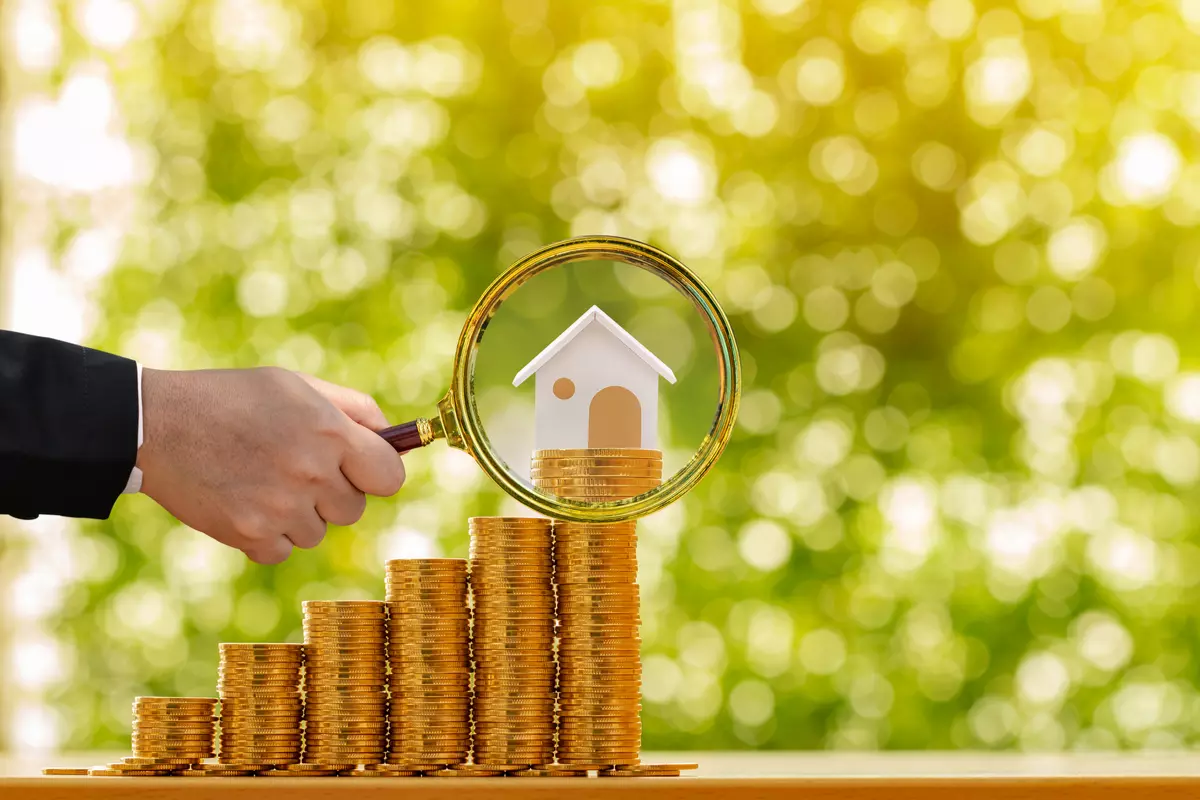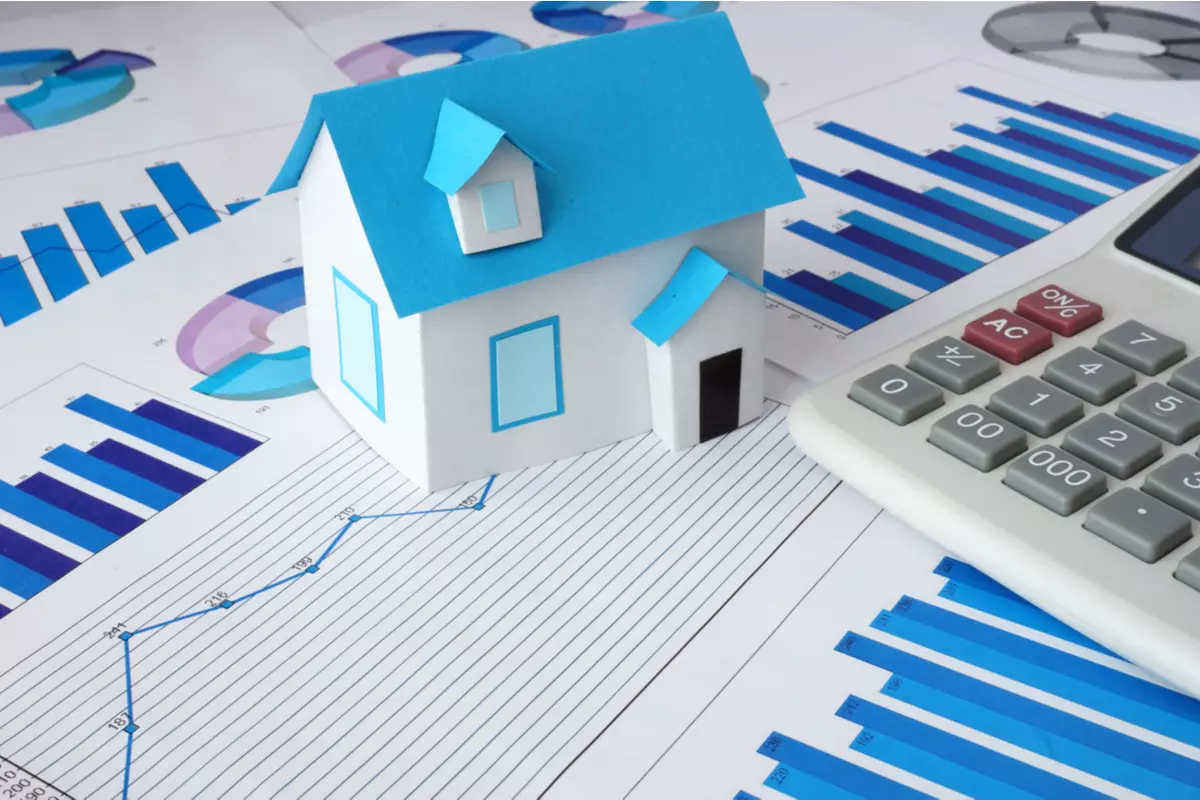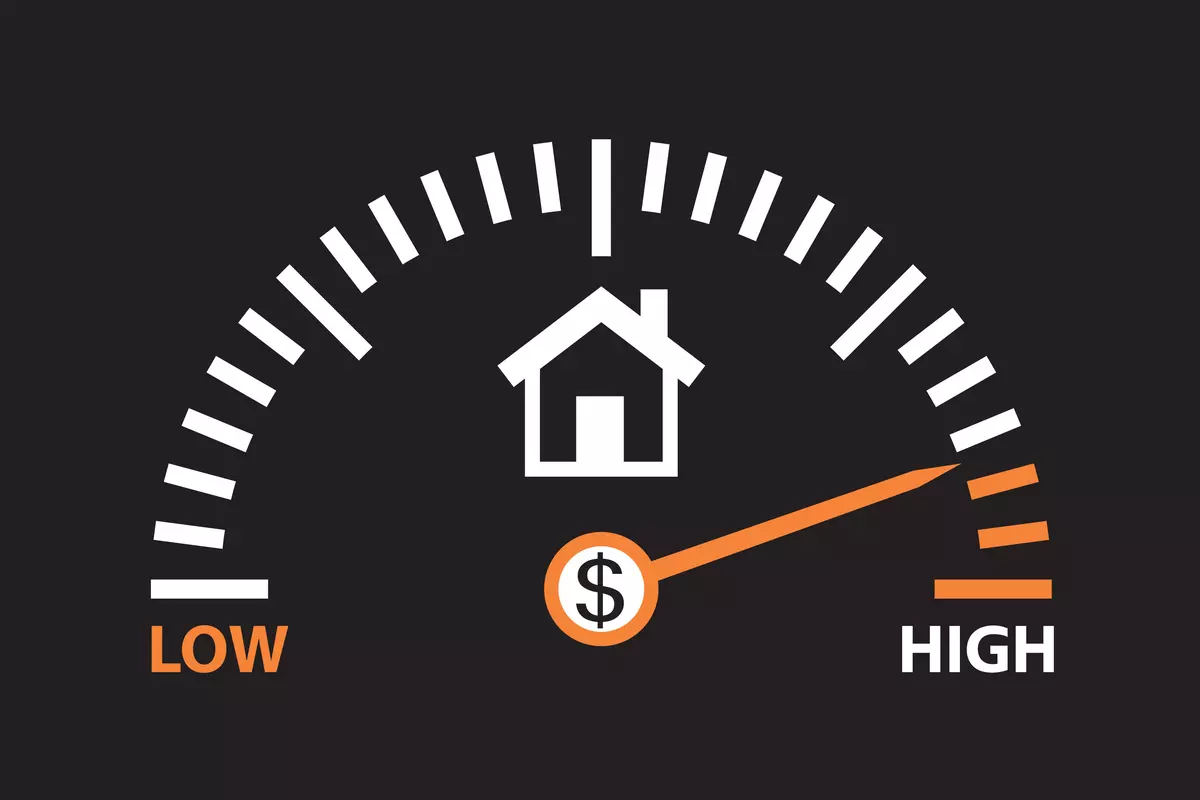What is a Gross Rent Multiplier, and How Do I Use It?
Ever wondered why some real estate investors consistently hit the jackpot while others barely break even? The answer might be simpler than you think: it’s all about knowing where to look. This is where the gross rent multiplier (GRM) comes in – an incredibly helpful tool that savvy investors use to find properties with the highest potential.
In this blog, we’ll break down everything you need to know about GRM, from its fundamental principles to advanced application strategies.
What Is a Gross Rent Multiplier?
The gross rent multiplier is a metric used by real estate investors to quickly assess the value of a rental property. It is calculated by dividing the property’s selling price by its gross annual rental income. The resulting figure offers an initial glance at the investment’s potential, allowing investors to compare properties and make informed decisions.

A lower GRM suggests a property might generate income more quickly relative to its cost, while a higher GRM could indicate a longer period to recoup the investment. This metric is especially useful for screening and comparing investment opportunities at a glance, setting the stage for deeper financial analysis.
Gross Rent Multiplier Formula
The gross rent multiplier formula is as follows:
GRM = Purchase Price of the Property / Gross Annual Rental Income
The purchase price is the total cost to acquire the property, including the purchase price and any additional fees necessary to make the transaction. Gross annual rental income refers to the total income the property generates in a year before any expenses are deducted. It’s the sum of all rent payments without subtracting for vacancies, maintenance, taxes, or other costs.
How to Calculate Gross Rent Multiplier: Example
To illustrate the GRM formula in action, let’s examine a practical example. Consider a property with the following financial information:
- Purchase Price: $300,000
- Gross Annual Rental Income: $36,000
Applying the GRM formula:
GRM = $300,000 / $36,000 = 8.33
This means that the property’s purchase price is approximately 8.33 times its annual rental income. A GRM of 8.33 suggests that, theoretically, the property could generate enough income to cover its purchase in roughly 8.33 years, assuming it remains at full occupancy and no significant changes in rental income or operating expenses occur.
By comparing the GRM with those of other properties in the same market, you can quickly gauge whether this property is more or less profitable. A lower GRM indicates a potentially more lucrative investment. This GRM can also provide insights into the broader market conditions.
Why Is it Important to Know the Gross Rent Multiplier?
The real estate investment process can seem like an intricate puzzle, especially if you’re sifting through multiple properties to pinpoint those worth your time and capital.

Property comparisons are much more difficult when you must worry about overhead costs and maintenance and deal with factors such as rental income, tenant issues, raises, and anything else that comes with running a solid commercial property. Calculating GRM in real estate allows you to compare two similar properties quickly to determine which investment will result in a quicker return on your investment.
As a result, it is a great way to identify which properties to pursue research into further and which ones do not meet your ROI standards. An investor can look up the gross rent multiplier quickly and make decisions immediately. The GRM, therefore, is not just a metric but a strategic ally, ensuring you focus your efforts on properties that align with your investment goals and financial criteria.
What is a Good GRM for a Rental Property?
A good GRM depends on various factors, including the property’s location, the current market conditions, and the investor’s specific goals. As a rule of thumb, a GRM between four and seven is typically considered good in many markets for residential rental properties. However, this range can vary significantly. In high-demand, high-cost areas, a good real estate GRM might be higher, reflecting the premium on real estate prices and the potential for substantial rental income.
When acquiring an apartment, it’s often suggested that the monthly gross rent should be at least 1% of the property’s purchase price. For instance, a property purchased for $500,000 ought to generate a monthly gross rent of $5,000, while a $1 million property should bring in a minimum of $10,000 in gross rent monthly.
Limitations of the Gross Rent Multiplier
While the GRM serves as a useful tool in the preliminary assessment of rental properties, it also comes with its limitations for a comprehensive investment analysis. The GRM simplifies the comparison process by focusing solely on purchase price and gross rental income, but this simplicity also means it omits several factors:
- Ignoring Operating Expenses: GRM calculations do not account for operating expenses, such as maintenance, management fees, insurance, and taxes. These costs can significantly impact the property’s generated net income, affecting its actual profitability.
- Overlooking Vacancy Rates: The GRM assumes continuous, full occupancy, a scenario that is rarely guaranteed. Vacancy rates can vary and significantly influence the rental income, yet GRM does not factor in these potential income interruptions.
- Property Condition and Capital Expenditures: The metric also doesn’t consider the condition of the property or the need for immediate repairs and upgrades. Initial capital expenditures can affect the investment’s return and should be evaluated beyond the GRM figure.
- Market Fluctuations: Because GRM is a status measure, it does not account for potential market changes that could affect property value or rental income, such as economic downturns or shifts in the local real estate market.
- Financial Structure and Leverage: The method overlooks how the purchase is financed. The impact of mortgage payments, interest rates, and leverage on cash flow and overall investment performance is not reflected in the GRM.
Using GRM to Monitor Property Values
GRM can also be used to monitor the value of a property. According to Trion Properties, “Rather than using the purchase price and gross rents to calculate GRM, we can flip the equation to calculate value.”

The formula here would be:
Property Value = GRM x Gross Annual Income.
For example, if the GRM is 8.25 and the Gross Annual Income is $400,000, the property value would be:
8.25 x $400,000 = $3,400,000
For a comprehensive evaluation, investors should compare this calculated value with those of similar properties in the area, using recent data and gross rent figures. This comparison helps determine if the estimated property value aligns with the current market trends.
Discrepancies between the calculated and market averages may indicate rental rates below market expectations. Over time, without regular adjustments, rent prices can lag behind the market, leading to understated GRM and, consequently, a distorted perception of the property’s value. Recognizing and adjusting this for underpricing is necessary for maintaining accurate property valuations and ensuring competitive returns on your real estate investments.
Gross Rent Multiplier vs. Cap Rates
In real estate investment, understanding the nuances between the gross rent multiplier and capitalization rates (Cap Rates) is needed to maximize returns. While both assess the property’s value and potential, these metrics illuminate different aspects of investment viability and profitability.
The gross rent multiplier focuses on the relationship between a property’s purchase price and its gross rental income. As discussed, it offers a quick, initial comparison tool for evaluating the potential return of different properties.
Capitalization rates, on the other hand, offer a deeper view of an investment property. They consider the property’s net operating income (NOI), which is the gross rental income minus operating expenses (excluding financial costs). This calculation provides a clearer picture of the actual return on investment, accounting for the costs associated with maintaining and operating the property.
The formula for calculating cap rates is:
Cap Rate = Net Operating Income (NOI) / Property Purchase Price
Investors typically use GRM and cap rates together to gain a comprehensive understanding of a property’s financial standing. While GRM can identify potential investment opportunities, cap rates help confirm their viability and profitability. Understanding both metrics allows investors to make informed decisions, balancing quick assessments with in-depth financial analysis.
Benefits of GRM
Some of the main advantages of GRM include:
- It is a versatile tool that allows investors to swiftly compare diverse properties across different locations, provided they share comparable features and attributes.
- It is easy and straightforward to use, making it accessible to those new to real estate or foreclosure investing.
- It is a useful screening tool for those who are looking to identify promising properties from a large pool of options.
- It bypasses the need for extensive financial details or operational data for calculations for initial evaluations.
- It reduces the time and resources required for initial property evaluations.
Disadvantages of GRM
On the other hand, some of the challenges include:
- It does not consider a property’s operating expenses, meaning that additional costs like general repairs and maintenance are not factored into the calculation, making the property seem more valuable than it is.
- It does not consider vacancy rates, property taxes, or insurance.
- It is sometimes used incorrectly to measure the time it would take to pay off the property.
- It does not reflect market dynamics over time and does not adapt to changes in the real estate market or economic conditions.
How to Use GRM
To get the most out of the GRM and gather a holistic financial picture of your potential property investment, follow these steps:
Creating a GRM Grading Scale
Creating a GRM grading scale is a good way to prepare for unexpected property issues and maintenance expenses. A lower GRM could mean having enough income to pay off a property quicker, but investors should also pay attention to property age and high maintenance costs.

Roofstock explains why the GRM grading scale is useful and how it works in real estate. Here is what different GRM grades can mean:
- A low GRM generally signifies that the property needs major repairs (such as a new heater or cooling system).
- An average GRM indicates a decent property that still needs updates but not as extensive. These may include a paint job and replacing appliances.
- An above-average GRM means the property was built in the last 10 years and only needs basic maintenance and upkeep.
- A high GRM indicates a new property with few issues and maintenance requirements and brand-new electrical and plumbing systems.
Putting GRM in Context
There are many tools for gauging a property’s value, and GRM is one of the simpler options. All investors should consider other tools, as well, when choosing whether to purchase a property. GRM should be used as a starting point alongside cap rates and cash return calculations.
Here is an example where a valuation tool other than GRM would be better. If a property’s gross annual income is temporarily inflated due to circumstances like a recent renovation, the GRM might not reflect the property’s standard earning potential. The renovated unit’s rent might be significantly higher than what’s typical, skewing the GRM calculation. In such cases, it’s better to obtain an independent appraisal or conduct a deeper financial analysis.
Understanding Fair Market Value
When the property is not for sale yet, you need to guess the price to determine GRM. One way to do that is with the fair market value, which is the amount of money that a property in a specific market may sell for at a given time.
Before putting a vacant rental property on the market, adjusting its rent, or deciding on a rental property to purchase, it’s necessary to have a grasp of the fair market value. Several factors influence the fair market value, including:
- The location
- The size of the property
- The property type
- The property age
- The condition of the property
- The number of bedrooms and bathrooms
- The amenities, such as the pool, view, gym, outdoor space, etc.
- The main utilities included in the rent price
Here are some facts to know about fair market value:
- It is the price an asset would sell for on the open market if all conditions are met.
- Fair market value is not the same as market value and appraised value.
- Fair market value is often used for the real estate market and tax settings.
- Insurance companies will use fair market value to figure out payouts for claim issues.
Other Factors Relating to Property Value
GRM offers a snapshot of a property’s financial attractiveness, but there are a few other aspects you should consider for informed investment decisions. Here are several other factors to keep in mind when looking for a rental property:
- Job Market: You want to invest somewhere where the job market is flourishing. Properties in areas with a robust job market attract a steady stream of workers seeking convenient commutes, enhancing demand for rentals.
- Property Taxes: Depending on where you choose to invest, property taxes may be very high. Research the local property taxes before settling on a property.
- Future Development: While construction and future developments can be a good sign for the neighborhood, they may also introduce competition, affecting your property’s appeal.
- Crime: Check the crime rate in your neighborhood before investing in a property. No one wants to live in an unsafe area. Be sure to ask about the frequency of police presence as well.
- Neighborhood: The neighborhood you choose to rent in will determine your clientele and vacancy rate. Investigate local crime rates and police presence to ensure the area’s desirability.
- Natural Disasters: If an area is prone to flooding or earthquakes, you may want to reconsider. Properties in disaster-prone areas require additional considerations, such as insurance costs, which could reduce overall rental income.
- Schools: If you plan on renting out to families, the school district will play a significant role in your property search. The quality of schools will determine the families you will rent out to, and if there are no good schools nearby, you may lose clientele.
- Number of Listings and Vacancies: A high vacancy rate means people are leaving the area, which can be concerning for an investor looking to maintain full occupancy. Look for a low vacancy rate, as this will allow you to raise your rental prices.
- Average Rents: Rental income will determine how much your property will go for. Make sure your rent can cover your mortgage payments, taxes, and other expenses you may have. Research the area to see where it will be in five years. You will have a better idea of what to expect in the coming years.
- Amenities: The availability of amenities like parks, restaurants, and entertainment venues enhances a property’s attractiveness to potential renters.
FAQ on Gross Rent Multiplier
Check out this FAQ section if you still have unanswered questions:
What Is Gross Potential Income?
Gross potential income is the total rental income a property can make if all the units are occupied and rented at market rates. It is also referred to as potential gross income, possible gross rent, or gross scheduled income.
It is the income a property could potentially produce, not what it will make for sure.
How to Figure Gross Rent Multiplier?
The gross rent multiplier is calculated by dividing a property’s purchase price by its gross annual rental income. Simply put, if a property is purchased for $200,000 and generates $20,000 a year in rent, the GRM would be 10. This straightforward calculation provides a quick comparison tool for investors to assess the income potential of various properties, helping them narrow down their options efficiently.
How to Improve Your Gross Rent Multiplier (GRM)?
You can improve your GRM by increasing the property’s gross rental income, reducing the purchase price, or both. Enhancing the property to justify higher rents, ensuring high occupancy rates to maximize income, and negotiating better purchase deals can effectively improve the gross rent multiplier.
How To Use GRM In Real Estate Investments?
GRM helps investors filter through multiple properties to identify those that merit a deeper financial dive. Start by calculating the GRM for each property you’re interested in. Properties with lower GRMs are generally more attractive as they indicate a lower purchase price relative to income, suggesting a potentially faster return on investment.
Use GRM to prioritize which properties deserve more in-depth analysis, including examining cash flow, operating expenses, and cap rates. This approach helps streamline the investment process by focusing attention on properties that align with your financial goals and investment criteria. Remember, GRM should be a part of a broader analysis strategy, not the sole determinant in your investment decision.
Conclusion
Gross rent multiplier gives real estate investors a quick way to screen and filter out potential real estate properties. This metric, when used in conjunction with a comprehensive analysis of additional factors, equips investors with the insights needed to make informed decisions in the real estate market. Embracing GRM as part of a broader investment strategy ensures a balanced, thorough assessment of opportunities, paving the way for successful investment ventures.
Table of Contents
- What Is a Gross Rent Multiplier?
- Gross Rent Multiplier Formula
- How to Calculate Gross Rent Multiplier: Example
- Why Is it Important to Know the Gross Rent Multiplier?
- What is a Good GRM for a Rental Property?
- Limitations of the Gross Rent Multiplier
- Using GRM to Monitor Property Values
- Gross Rent Multiplier vs. Cap Rates
- Benefits of GRM
- Disadvantages of GRM
- How to Use GRM
- Creating a GRM Grading Scale
- Putting GRM in Context
- Understanding Fair Market Value
- Other Factors Relating to Property Value
- FAQ on Gross Rent Multiplier
- What Is Gross Potential Income?
- How to Figure Gross Rent Multiplier?
- How to Improve Your Gross Rent Multiplier (GRM)?
- How To Use GRM In Real Estate Investments?
- Conclusion